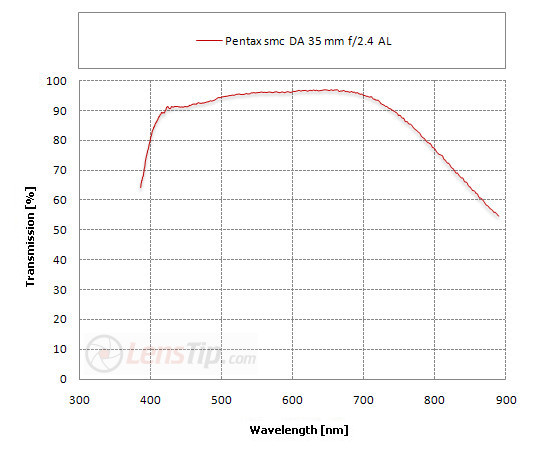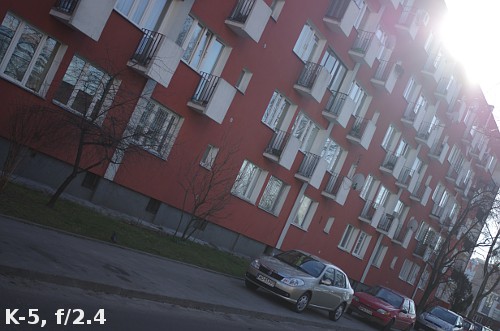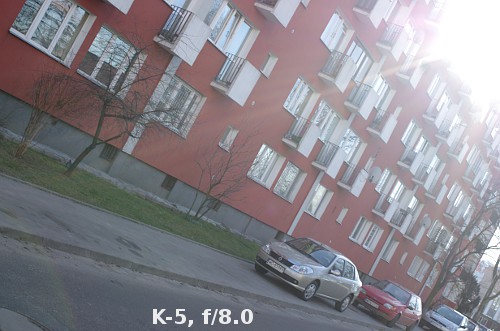Pentax smc DA 35 mm f/2.4 AL
9. Ghosting, flares and transmission
 |
The graph looks really nice for this price segment. The lens reaches a peak in the 600–670 nm range with the level of almost 97%. In the centre of visible spectrum it is only 1% less. The worst performance can be observed for blue and purple light but even there the transmission exceeds a very high level of 91% without any problems.
Please Support UsIf you enjoy our reviews and articles, and you want us to continue our work please, support our website by donating through PayPal. The funds are going to be used for paying our editorial team, renting servers, and equipping our testing studio; only that way we will be able to continue providing you interesting content for free. |
- - - - - - - - - - - - - - - - - - - - - - - - - - - - - - - - - - - - - - - - - - - - - - - -
Certainly the fact that this lens features a simple optical construction contributes to the good result. Only five groups of elements mean the necessity to cover only 10 air-to-glass surfaces with anti-reflection coatings. To get the transmission on the level of 96-97% we must use coatings which on one surface lose about 0.4% of direct light. In this class of equipment such coatings are definitely praiseworthy.
Good quality of coatings can be also noticed while working against bright light. At the maximum relative aperture as well as on stopping down it’s difficult to catch any distinct light artifacts.
 |
 |






